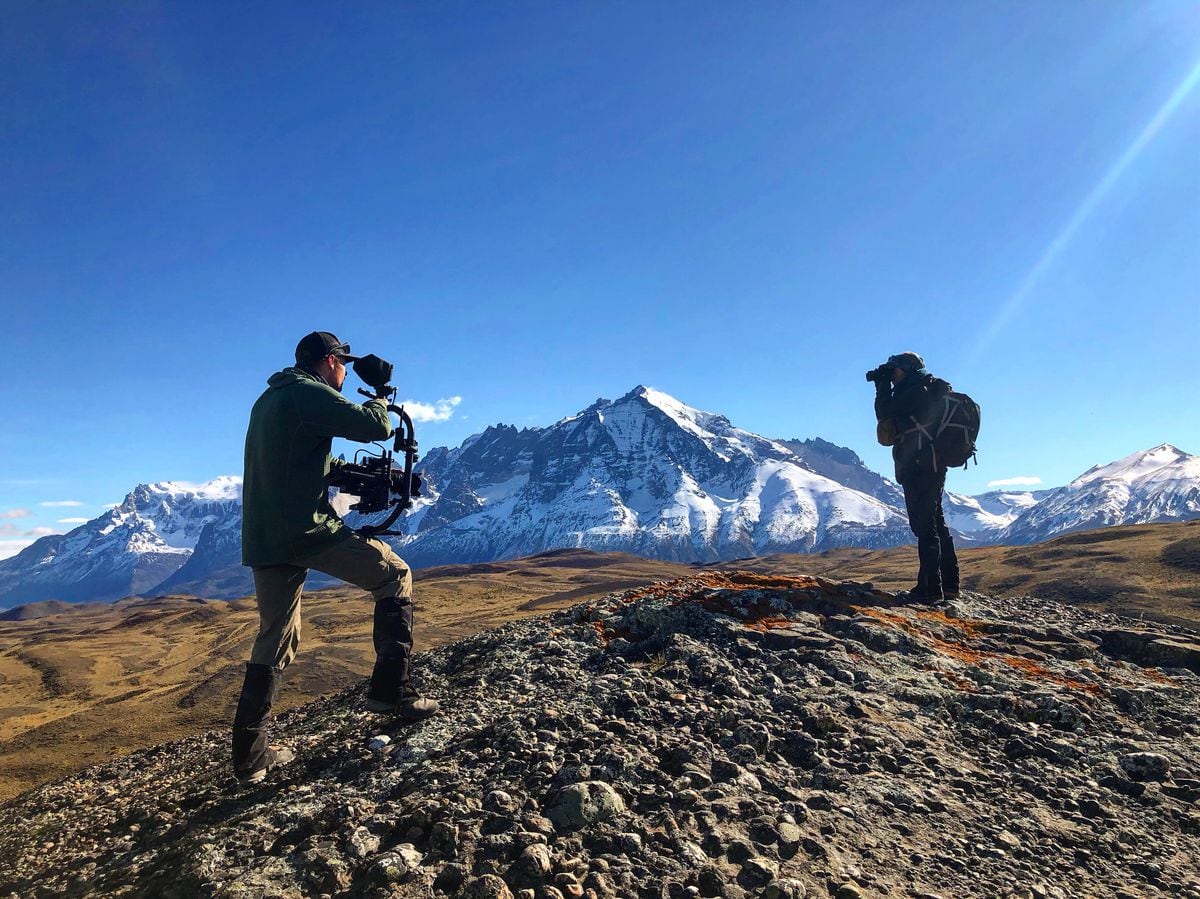The nature documentary filmmaker René Araneda (40 years old, Santiago de Chile) knew that he did not want to repeat the image of a puma feeding its cubs for the Netflix docuseries Our Great Natural Parks.
It's been done before: Araneda has filmed the scene himself for the BBC and Animal Planet.
For the Patagonia-focused episode, the production team set out to record the feline socializing.
The challenge was enormous, considering that until just a couple of years ago, scientific evidence showed that it was a solitary creature.
But the Chilean has been working in the area for decades, and the Torres del Paine National Park is a sanctuary for the predator.
The filmmaker managed to capture eight cougars interacting and sharing their prey around a lagoon.
When producers James Honeyborne (Blue Planet II) and Sophie Todd (Formula 1: Drive to Survive) first met Araneda in London to invite him to participate in the project, they explained that they wanted to dedicate one of the five episodes to Patagonia.
They saw the region as an example of reconstruction, emphasizing the donations of wild areas to the state, and they were interested in showing the massive stretches of wilderness on the earth's furthest southern points.
“One thinks that there are many human settlements in the area, but no.
Patagonia's diversity made it possible to tell new stories, with a different look, to an international audience that has wanted to know more about the place for some time,” Araneda says via Zoom.
The documentary calculates that the show includes two to five percent of the material that the crew filmed.
His team of him recorded for a year and a half in different corners of the 12 million hectares that make up Patagonia's 17 national parks.
They took some license to document areas outside of Patagonia, including the decimated araucaria forests in the Conguillio National Park and the hunting methods of leopard seals on the Diego Ramírez Islands, “the last piece of land before Antarctica.”
At that London meeting, the producers offered Araneda the chance to be one of the five editorial brains of the docuseries.
They also told him that Barack Obama, co-executive producer of the program, would narrate the film, although he could not share that information with no one, not even with his recording partners.
They also commissioned him to capture how the endangered Andean condor learns to fly.
Araneda accepted, despite knowing that filming that learning process was almost impossible, not only because of the low density of the Chilean national bird, but also because they nest on inaccessible cliffs protected by vegetation.
It took 10 months to find one.
To create the docuseries, different teams worked for three years–two of them during the pandemic–carrying out dozens of expeditions in national parks on five continents.
They relied on neighbors of the areas they explored, as well as scientists specialized in each animal or insect they wanted to film.
Araneda had asked the community of Aysén, 2,000 kilometers south of Santiago, to contact him if they saw anything resembling a condor's nest.
One day I received a call from a married couple.
“We arrived just when the bird, about eight months old, was most active, jumping from the ledges,” he recalls.
The episode shows the chick's trial and error, right up to the moment it successfully achieves its first flight.
After filming, each of the sequences were sent to an expert on the animal and a park ranger from the National Forestry Corporation (CONAF) for their observations.
The tour of Patagonia was a personal journey for Araneda.
He remembers the photographs he took of the Gray Glacier from the beach the first time he visited Torres del Paine.
“It felt much closer than now,” he laments.
The glacier's melting, due to climate change, has accelerated its retreat.
Now, a rock with vegetation has appeared in the middle of the piece of ice.
Despite the magnitude of the environmental crisis, the docuseries does not treat it as a core issue, instead focusing on the growth of flora and fauna in protected areas.
“On the spectrum of nature documentaries, there are some that are a little more alarmist about the problem.
The mission of this one is for the spectators to fall in love with the animals so they are left with a positive feeling, they want to visit the parks or they are motivated to protect them.
I would say that it is not a scientific show, but an emotional one,” explains the Chilean, who in 2012 fell in love with a small cougar who was missing a tail, which would star in his series Wild Expectation (2016).
The feline became famous, and since then, it has appeared in all Araneda's documentaries recorded in Torres del Paine.
In Our Great Natural Parks it appears, now with an aging face, interacting with other pumas around a lagoon.








